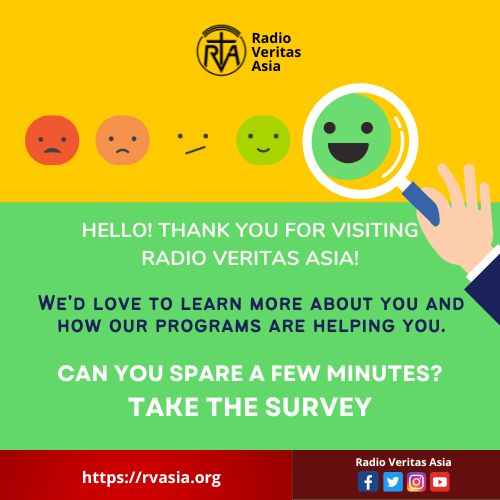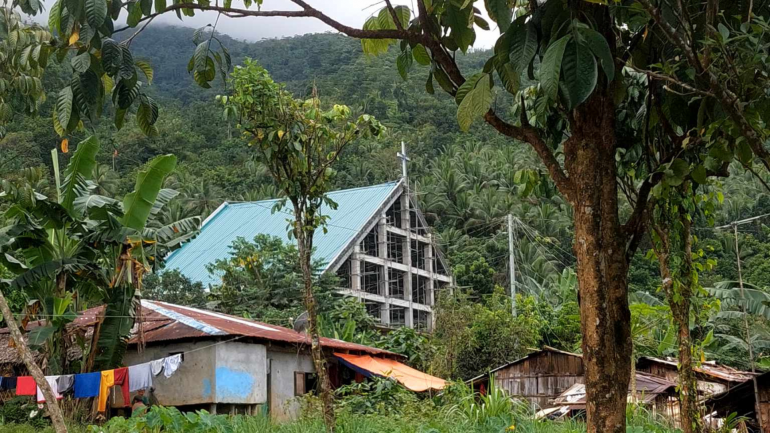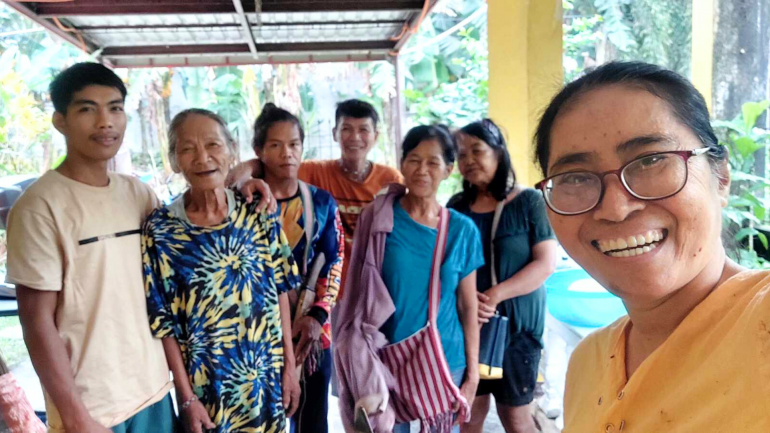Learning Heart Care from the Indigenous Mangyan

Badbad Mangday, 74, an Indigenous Hanunuo Mangyan, in a far-flung mountain in Mansalay, a southern town in Oriental Mindoro province, Philippines, wakes up at chicken crows, from a good night undisturbed sleep by what could be a “modern life” for those living in the lowlands.
He would walk barefoot into the kaingin (farm), work and hang out there long, and eat from his produce, usually boiled root crops and bananas.
With his family and tribe mate, they move lightly and quickly, as their slender bodies are unthreatened by obesity, a growing concern among the lowlanders.
Going to the farm means fresh air immersion, sun exposure, crossing rivers, immersing in natural sounds, and joyful chats while sitting squat with fellow Mangyan people, the original settlers of Mindoro Island, located in southern Luzon, Philippines.
They are shy and peace-loving people who were pushed to the mountains away from those who were able to secure land titles.
Asked if harmful cholesterol-induced heart diseases are a major concern among the Mangyan people, Fr. Cris Raymundo, recently assigned in charge of the health care program of Mindoro clergy and the parish priest in charge of Mangyans in Sangilin in Baco town of Mount Halcon, said it is not.
"From my decades of working with the Mangyan in the mountains, I found that the health issue primarily affects the lungs, as they cook with firewood inside their small houses." Otherwise, the mobility and active lifestyle of the Mangyan people, primarily as farmers and food gatherers from their natural setting, protect them from heart diseases,” he said.
“We had this 70-year-old Mangyan now whom we asked to stay in the lowland to assist in some programs, uprooted from the indigenous nature-based lifestyle, who got sick. But when he returned to the mountain, as per his request, his health resumed,” said Raymundo.
Bad cholesterol kills many, but not yet among the Indigenous Mangyan
In a project by Novartis, an innovative medicines company that tries to address heart disease, it said uncontrolled high low-density lipoprotein cholesterol (LDL-C or bad cholesterol) has been a silent killer in the Philippines, where each year, over 124,000 Filipinos are said to die prematurely from ischemic heart disease caused by bad cholesterol and plaque accumulation.
Dr. Patricia Caballero, a medical doctor at Oriental Mindoro Provincial Hospital, agrees with Raymundo’s statement. “I have not encountered a case when a Mangyan has been rushed to the hospital due to a heart attack unless the reason is their distance from the facility or culture,” she said.
“I have not even seen an obese Mangyan. In addition to an active lifestyle, I would factor this into their eating habits, which primarily consist of boiled root crops, fruits, and vegetables from their surroundings, away from the fast-food culture and many advertisements that promote unhealthy foods. Also, they do not have the money to buy “unhealthy foods,’” says Caballero.
For a scientific validation of their cholesterol levels, one challenge Caballero cited is that the Mangyan people are not used to having their blood tests taken.
An initiative called Unblocked Movement was co-created with partners and supported by Novartis to bring patients, their loved ones, healthcare professionals, and healthcare systems together in a shared mission to unblock barriers to heart health.
According to reports, atherosclerotic cardiovascular disease (ASCVD) is the primary contributor to cardiovascular disease (CVD), which is the leading non-communicable disease in the Philippines.
ASCVD includes ischemic heart disease and cerebrovascular disease, which are among the top causes of death in the country. The top 3 risk factors of ASCVD are high systolic pressure, high-fat diet, and elevated LDL-C.1-3.
Untreated high levels of LDL-C lead to the accumulation of fatty plaques in the arteries. These plaques clog the blood supply to the heart and increase the risk of heart attack.
Despite ASCVD being the leading cause of death in the Philippines, it is possible to manage cholesterol as a key risk. “Take action to lower it fast. The next heart attack or stroke could be worse—act now to stay protected, advises the Unblocked Movement.
Learning heart care in the Mangyan culture
Dr. Anthony Leachon, a cardiologist and a native of Mindoro, agreed many lessons can be adopted from the Mangyan culture that would help reduce CVD risks.
“Ischemic heart diseases, neoplasms, and cerebrovascular diseases are still the three leading causes of death in the Philippines. This is due to lifestyle changes in recent times and the effects of smoking, alcohol drinking, unhealthy diet, lack of exercise, and stress,” he said.
The environment can modify people's health by altering their habits and behavior. The Mangyan indigenous group is mobile and devoid of the urban environment triggers,” said Leachon.
“There are five original blue zones—the places in the world with the healthiest, longest-living populations, including Okinawa, Japan; Sardinia, Italy; Nicoya, Costa Rica; Ikaria, Greece; and Loma Linda, California. They live from 90 to 100 years old,” he said.
“Their lifestyle factors—diet, regular physical activity often integrated into daily life, strong social connections, and a sense of purpose—are key factors for this observation,” said Leachon, an independent health reform advocate.
Leachon recommends to his patients a lifestyle checklist. This includes stopping smoking and avoiding a high-fat diet like French fries, burgers, processed foods, junk foods, pork, beef, cakes, and ice cream.
“Keeping physically active is an important part of a healthy lifestyle. Exercise daily for 30 minutes, like walking, running, and dancing,” he said. “Maintain an ideal body weight. Stop alcohol drinking. Reduce stress by relaxation, exercises, meditation, talking to family or friends about your problem, etc.”
He added that regular taking of medications, regular visits to the doctor, sleeping for at least eight hours a day, and choosing to be happy are good measures to keep healthy and happy.
“There is less focus on material things. Instead, the Mangyan embody the spirit of sharing year-round. Unlike lowlanders, who often stress over expenses and activities during the holidays, the Mangyan find contentment in life’s simple pleasures: fresh vegetables and root crops, clean air, the soothing sounds of birds and waterfalls, and the vast mountain landscape,” they said.
Pato Ramos has been an active volunteer in reaching out to the Mangyan in the far-flung mountain areas. A licensed physical therapist, he says there is indeed much to learn from them in terms of a healthy or unhealthy heart from as early as conception and in addition to bad cholesterol.
“A potential father and especially a potential mother must be in their peak health and must adopt a very healthy dietary practice while trying to conceive a healthy baby. For the Mangyans, their regular physical workload, supported by healthy foods bring about a healthy cardiovascular system. And not to forget minimizing or coping with mental, emotional stressors to maintain a healthy heart,” he said.
“The Mangyan are usually working on the fields when there is natural light from sunrise to sunset. There is no television, so they get to sleep early. Although the ratio of their carbohydrate foods is high like yam, rice, sweet potato (camote), coconut meat and bananas, these are fully burned during manual labor and during body recovery at rest,” he said.
Mercedita Anorico, nutritionist, and who used to join Ramos in the Mangyan outreach agrees that the Mangyan also have proteins, fats, vitamins and minerals from their wild animals, coconuts, wild nuts, avocado, diverse fruits and vegetables which they are able to gather.
In an earlier radio interview with Mangyan youth leaders Batoy Daw Ay and Herald Calinog, they said their life as students in the lowland is a lot stressful compared to when they are in their upland villages.
They cited a stress-free celebration of the Christmas holidays, which, although introduced to the Mangyan through Christianity, the Mangyan celebrations differ.
“There is less focus on material things. Instead, the Mangyan embody the spirit of sharing year-round. Unlike lowlanders, who often stress over expenses and activities during the holidays, the Mangyan find contentment in life’s simple pleasures: fresh vegetables and root crops, clean air, the soothing sounds of birds and waterfalls, and the vast mountain landscape,” they said.
(This article is part of the Unblock Your Heart Health Reporting initiative, supported by the Philippine Press Institute and Novartis, to improve health literacy on cardiovascular diseases. Know your numbers, understand your risks, and consult your doctor—so no Filipino heart is lost too soon. Take control of your heart health today. Visit unblockedmovement.ph for more information.)
Health Alarm
While the Mangyan people traditionally healthy, Fr. Gabayno Oybad, the first Mangyan priest and now in-charge of the Risen Christ Parish for the Mangyans in southern Mindoro, said they are alarmed that while the average life of a Mangyan is healthy, there are those getting sick and die from acquired vices like smoking, drinking liquor and eating junk foods in the last three years.
"We had a businessman Mangyan who died from a heart attack. Because of this work, his movements became limited, he became obese and got a stroke. The active Mangyan used to easily burn cholesterol. We have three cases in our village in Banti in Bulalacao where a heart disease affects the other organs of the body," said Oybad.
They are intensifying their organic farming for healthy foods.
Mangyan midwife Marites Cruzado who works in Socorro town confirms this. “Mangyans are now also taking maintenance medicines for heart diseases, hypertension and diabetes.”
Environmental activist Evelyn Cacha agrees more are getting sick because of “lifestyle factors: wrong food, stress due to the ambition to earn more money, lacking in exercises; instead of walking, people would take rides and use fossil fuels that worsen global warming.”
Also a nutritionist, she says “food are kept long in grocery shelves for convenience, so the need to use preservatives, flavor , color and texture enhancers, cancer-causing chemicals. GMO (genetically modified organism) products which use soy also for animal feeds. In order to thicken the sauce for a cheaper price and good taste, flour and starch to imitate the taste of tomatoes or protein, like hydrolyzed protein are being used.”
To make butter cheaper and tastier, milk and vegetable oil and flavor enhancers are added, she said.
“All this may be brought about by the need to produce more cheaper food for more people because of an economic system that is controlled by a few and with more people earning less or are without jobs to support their family needs.”
“The produce of the Mangyan do not traditionally use chemical fertilizers and pesticides, thus safer for one’s health. Let us patronize their harvest and buy at a fair price. This will be a big help to them so they will be able to buy needs which are not available in their place,” said Cacha.
Care for the Mangyan Health
Pato Ramos, has been an active volunteer in reaching out to the Mangyan in the far flung mountain areas. A licensed physical therapist, he says there is indeed much to learn from them in terms of a healthy or unhealthy heart from as early as conception and in addition to bad cholesterol.
“A potential father and especially a potential mother have to be in their peak health and must adopt a very healthy dietary practice while trying to conceive a healthy baby. For the Mangyans, their regular physical work load, supported by healthy foods bring about a healthy cardiovascular system. And not to forget minimizing or coping with mental, emotional stressors in order to maintain a healthy heart,” he said.
“The Mangyan are usually working on the fields when there is natural light from sunrise to sunset. There is no television so they get to sleep early. Although the ratio of their carbohydrate foods is high like yam, rice, sweet potato (camote), coconut meat and bananas, these are fully burned during manual labor and during body recovery at rest,” he said.
Mercedita Anorico, nutritionist, and who used to join Ramos in the Mangyan outreach agrees that the Mangyan also have proteins, fats, vitamins and minerals from their from wild animals, coconuts, wild nuts, avocado, diverse fruits and vegetables which they are able to gather.
In an earlier radio interview with Mangyan youth leaders Batoy Daw Ay and Herald Calinog, they said their life as students in the lowland is a lot stressful compared to when they are in their upland villages.
They cited a stress-free celebration of the Christmas holidays, which, although introduced to the Mangyan through Christianity, the Mangyan celebrations differ. “
“There is less focus on material things. Instead, the Mangyan embody the spirit of sharing year-round. Unlike lowlanders, who often stress over expenses and activities during the holidays, the Mangyan find contentment in life’s simple pleasures: fresh vegetables and root crops, clean air, the soothing sounds of birds and waterfalls, and the vast mountain landscape,” they said.
This article is part of the Unblock Your Heart Health Reporting initiative, supported by the Philippine Press Institute and Novartis, to improve health literacy on cardiovascular diseases. Know your numbers, understand your risks, and consult your doctor—so no Filipino heart is lost too soon. Take control of your heart health today. Visit unblockedmovement.ph for more information.
Radio Veritas Asia (RVA), a media platform of the Catholic Church, aims to share Christ. RVA started in 1969 as a continental Catholic radio station to serve Asian countries in their respective local language, thus earning the tag “the Voice of Asian Christianity.” Responding to the emerging context, RVA embraced media platforms to connect with the global Asian audience via its 21 language websites and various social media platforms.

















